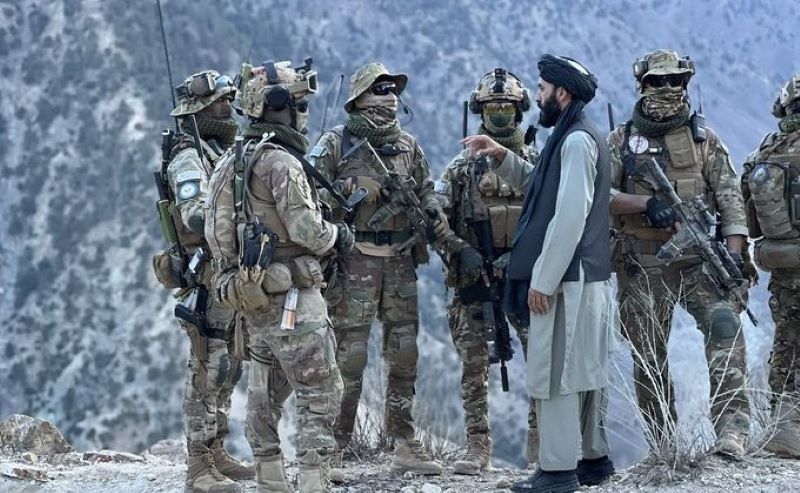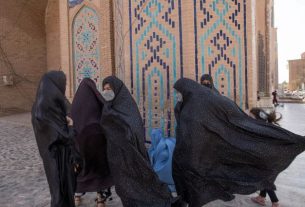By Naeem Khan. Updated October 17, 2025.
A fragile truce lies over a line long scarred by empire and insurgency. This week, a fresh rupture along the Durand Line — the porous, 2,600-kilometer frontier that divides Pakistan and Afghanistan — flared into deadly violence, leaving soldiers and civilians dead, hospitals full, and diplomats scrambling for breathing room in Doha. The bout of fighting has exposed not only the enduring, local drivers of violence but also the geopolitical currents — China’s Belt and Road ambitions, Pakistan’s anxieties about cross-border militancy, and India’s fast-changing rapprochement with Kabul — that now frame South Asia’s insecurity.
On October 15–17, exchanges of fire and suicide attacks marred border districts from Spin Boldak in Kandahar to Chaman and North Waziristan in Pakistan. Pakistani authorities reported a suicide attack that killed seven soldiers near the Afghan border. Afghan sources — and Taliban spokesmen — have accused Pakistani forces of airstrikes and ground raids that killed civilians and sparked widespread displacement. Both sides have accused the other of staging the original provocation. A temporary 48-hour ceasefire was brokered as delegations prepared to meet in Doha for talks; the truce has since been extended amid fragile optimism.
The deep currents beneath the flashpoints
To understand why the frontier still erupts, you must look past the artillery to the tectonics: the unresolved legacy of the Durand Line; decades of sanctuary and militancy; mass displacement and politicized migration; and rival capitals seeking influence through proxies and infrastructure.
First, the Durand Line itself is a historic fault line. Drawn in 1893 by the British, it bisected Pashtun lands without settling loyalties; tribes, trade routes, and insurgent networks have long ignored it. Second, the security vacuum in parts of Afghanistan, compounded after the Taliban’s 2021 takeover, created space for groups such as Tehrik-e-Taliban Pakistan (TTP) to operate from Afghan soil — a recurring Pakistani grievance that Islamabad says has justified cross-border action. Pakistan has blamed the TTP and other militants for recent attacks, while Kabul rejects claims of safe havens and blames Pakistani strikes for civilian harm.
Third, demographic and migration pressures complicate the calculus: Pakistan has deported large numbers of undocumented Afghan refugees in recent years, feeding social tensions and humanitarian strain. Fourth, insurgency economics: where state presence is thin, militias and crime networks weave patronage and violence into daily life and military responses often ripple into wider political friction.
The new silk threads: Belt & Road, railways, and regional rivalry
If the Durand Line is an old wound, China’s Belt and Road Initiative (BRI) has become a new magnet. Beijing, Islamabad and Kabul have publicly discussed extending the China–Pakistan Economic Corridor (CPEC) into Afghanistan, and high level meetings this year signaled Beijing’s intent to fold Afghanistan into regional connectivity plans, including talk of rail links and transit corridors. China’s overtures mining deals, infrastructure pledges, and ministerial dialogues aim to anchor Kabul economically, but they also recalibrate regional influence in ways that worry New Delhi and complicate Islamabad’s posture.
One concrete thread is talk of rail and road projects that would physically bind the region: proposals discussed in trilateral talks envisage extending CPEC routes into Afghan territory and even conceptual rail links that could, in the long term, connect China to South Asia via Afghanistan and Pakistan. For Kabul, such projects promise revenue and connectivity; for Beijing, they offer strategic depth and resource access. But infrastructure is politics: lines on maps become levers of influence and in a contested neighborhood, any railway can be as much a cause of tension as a promise of trade.
Diplomacy on the move: Taliban’s foreign minister in New Delhi
Against this backdrop the Taliban’s foreign minister traveled to New Delhi in October a diplomatic gambit that shows how rapidly regional alignments are shifting. India has opened channels with Kabul in a pragmatic, interest-driven move to hedge Pakistan’s influence and to secure humanitarian and development stakes in Afghanistan. New Delhi’s engagement, and Beijing’s outreach, create competing spheres of influence that overlay local security disputes and make a bilateral border fight resonate far beyond its geography.
The human cost and the fog of claims
Reporting from both sides is congested by propaganda and the chaos of conflict. Pakistani officials have described high-profile militant assaults on security installations, including a vehicle borne suicide attack on a military compound in Mir Ali and subsequent operations that Islamabad says killed scores of militants. Afghan officials and independent observers counter that Pakistani strikes and raids have killed civilians inside Afghan territory and provoked displacement. Independent confirmation remains difficult in remote border zones, but hospitals on both sides have reported wounded civilians and soldiers. Amid competing tallies, the durable truth is the same: lives have been lost, families uprooted, and trust further eroded.
What next? A rough map of possibilities
Short term: ceasefires and Doha talks may cool immediate flames, but without credible mechanisms to monitor borders, investigate incidents, and address cross-border militancy, pauses are fragile. Medium term: infrastructure deals with China could incentivize stability, if and only if Kabul, Islamabad and Beijing can manage security guarantees and local grievances. Long term: durable peace requires addressing political inclusion in Afghanistan, managing refugee flows humanely, and creating transparent, verifiable cross-border security arrangements that reduce incentives for unilateral strikes.
Conclusion
This is not a conflict that can be solved by a single summit or one railway line. It is a layered picture: the stubborn local dynamics of insurgency, the human tragedies that come with frontline exchanges, and now the strategic overlay of a competing great power diplomacy. As trains and roads are planned, the question will be whether steel and asphalt stitch the region together or whether they carve new lines of rivalry across an already fragile map.





